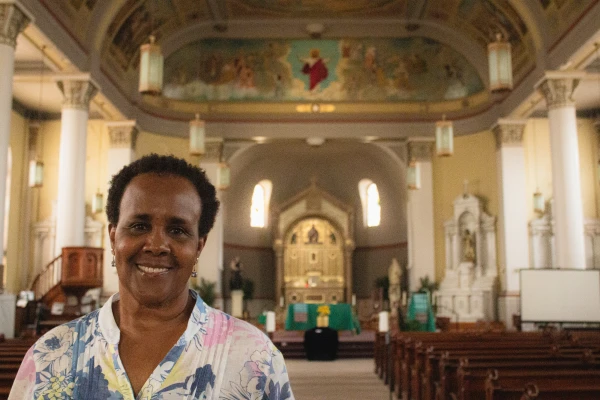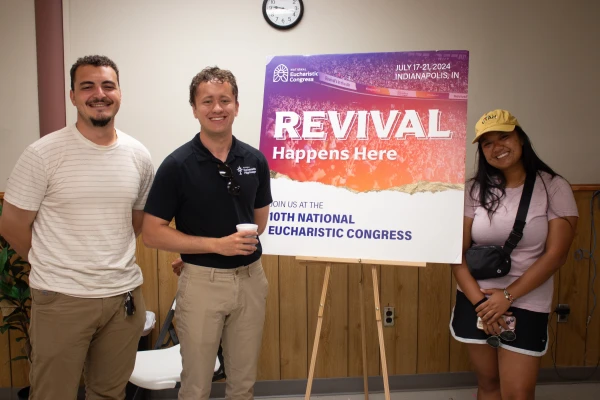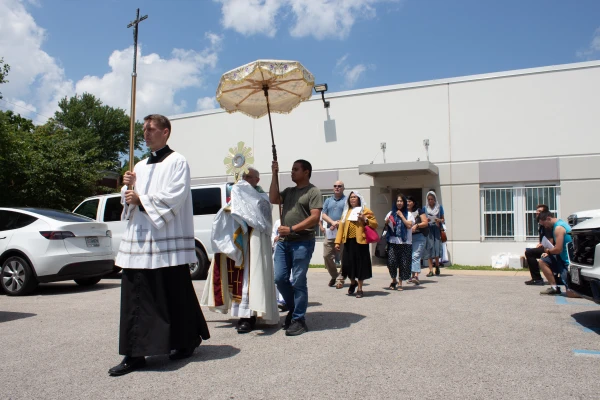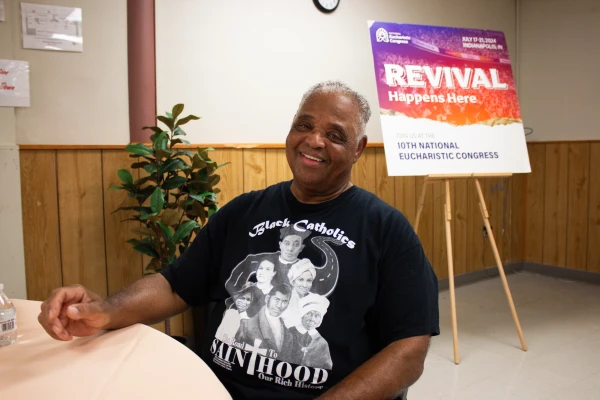St. Louis, Mo., Jul 10, 2024 / 09:33 am
Pam White was raised Catholic but left the Church in 1984, in part because the homilies weren’t speaking to her.
It was the Eucharist — and the fact that she never stopped believing that Jesus was present there — that brought her back to the Catholic Church after five years away.
“I’ve always done Eucharistic adoration — it’s just in me,” White told CNA.
Now, White wears many hats at her historically Black Catholic parish, St. Josephine Bakhita, in St. Louis — catechetical leader, children’s ministry leader, and most recently the parish point person for the National Eucharistic Revival. White said she assumed that role after she asked Father Mitch Doyen, her pastor, who was spearheading the Eucharistic Revival events at their parish.
“You are,” she recalled Doyen saying.

St. Josephine Bakhita Parish was formed from a recent merger of three former parishes, which came into effect in October 2023. According to the archdiocese, the three former parishes originally had Irish roots in the 1800s, but over the years, the once Irish neighborhoods became primarily African-American and the profile of the parishes changed, too.
Today, most parishioners come from outside the parish boundaries to attend Mass here. The surrounding neighborhoods are primarily poor, 82% African-American, and only 1% Catholic.
St. Josephine Bakhita Parish was chosen as a stop on the Serra Route of the National Eucharistic Pilgrimages, a monumental effort to process the Eucharist hundreds of miles starting at the four edges of the country. The Serra Route began in San Francisco in May and, thousands of miles later, arrived in the St. Louis area July 5 to enthusiastic crowds. The pilgrimage will culminate, along with the other three routes, with an arrival in Indianapolis on July 16 in time for the National Eucharistic Congress.
As part of the parish’s participation in the national movement, White helped to organize a July 6 lunch for the Perpetual Pilgrims — young people committed to walking the entire route with Jesus — to support them during their day of service with the Missionaries of Charity, which is located right in the parish’s “backyard,” White said.
Patrick Fayad, one of the Perpetual Pilgrims, said the pilgrimage experience has been a reminder that following Christ is not always an experience of “constant comfort.”
“I’m with a bunch of strangers doing something really difficult, giving up my personal freedoms, and we spend a lot of time in silence around each other,” he said.
“Through it all, he’s allowed us and given us the grace, whether we sense it or not, to be present to him and also to love each other.”
He said seeing the enthusiasm of the people they have encountered, whether in big cities like St. Louis or in small towns, has offered him constant reminders of the reason they are doing the pilgrimage in the first place — Christ himself.
“The Lord has given us, at least for me, the gift of remembering why I’m here and the beauty of it. It’s given me energy, through encountering other people and seeing masses of people that are excited,” Fayad said.

(Story continues below)
The parish also hosted Eucharistic adoration after Auxiliary Bishop Mark Rivituso of St. Louis processed the Eucharist from the Missionaries of Charity to the magnificent church (originally St. Teresa of Avila Church) that serves as the primary worship site for St. Josephine Parish.

Augustus “Gus” Lewis has attended the church that is now part of St. Josephine Parish since he was 5 years old. He was present for lunch with the pilgrims and wore a shirt depicting the faces of several prominent African-American Catholics who are being considered for sainthood, including Father Augustus Tolton.
Despite his name, Gus says he wasn’t named after Tolton — “I was named after my grandfather,” he said, laughing. He said he very much hopes that the Catholic Church will soon recognize as saints the holy men and women his shirt depicts.

White, who is planning to attend the National Eucharistic Congress with a handful of her fellow parishioners, said one of her favorite things about Eucharistic adoration is the opportunity to sit in silence with Jesus.
“When I first started adoration, I was really filling it up with things like the rosary and reading … but you should really be listening to God. My focus when I get there is, ‘Lord, what do you want me to do? Lord, how am I doing with what it is you want me to do?’”
“I’m just really excited to bring this [adoration] to our church. There were some older Catholics here that hadn’t ever been to Eucharistic adoration,” White told CNA.






